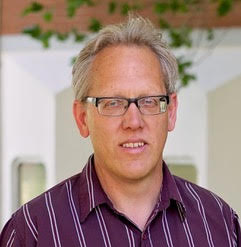The Impact of a Comprehensive Program on College Success of Academically and Socioeconomically Disadvantaged Students
Article ID: 1161
DOI: https://doi.org/10.30564/jiep.v2i2and3.1161
Abstract
Low rates in college graduation and persistence have been a significant and persistent issue among urban high school graduates in the Unites States of America, especially for the academically and socioeconomically disadvantaged student population. In response to a college completion initiative, higher education institutions in one large city have joined forces to battle this issue. The purpose of this mixed-methods study was to examine the effects of one such university’s comprehensive support program on public high school graduates’ success in college graduation and persistence, and identifies a set of unique high impact practices that have contributed to the success of the program.
Keywords
Full Text:
 PDF
PDF
References
[1] Astin, A. W. (1993). What matters in college: Four critical years revisited. San Francisco, CA: Jossey-Bass.
[2] Bavarian, N., Lewis, K.M., DuBois, D.L., Acock, A., Vuchinich, S., Silverthorn, N., Snyder, F.J., Day, J., Ji, P., Flay, B.R. (2013). Using social-emotional and character development to improve academic outcomes: A matched-pair, cluster-randomized controlled trial in low-income, urban schools. Journal of School Health, 83(11), 771-779.
[3] Bers, T., & Schuetz, P. (2014). Nearbies: A missing piece of the college completion conundrum. Community College Review, 42(3), 167-183.
[4] Boeije, H. (2010). Analysis in qualitative research. Thousand Oaks, CA: Sage.
[5] Chickering, A. W., & Gamson, Z.F. (1987). Seven principles for good practice in undergraduate
[6] education. AAHE Bulletin, 39(7), 3-7.
[7] Doody, O., & Noonan, M. (2013) Preparing and conducting interviews to collect data. Nurse Researcher, 20(5), 28-32.
[8] DuFour, R. (2004). What is a "professional learning community"?. Educational Leadership, 61(8), 6-11.
[9] Hudley, C., Moschetti, R., Gonzalez, A., Su-Je, C., Barry, L., & Kelly, M. (2009). College freshmen's perceptions of their high school experiences. Journal of Advanced Academics, 438-471.
[10] Liamputtong, P. (2011). Focus group methodology: Principles and practice. Thousand Oaks, CA: Sage.
[11] Linkow, T., Didriksen, H., Gamse, B., Bumgarner, E., Velez, M., Dastrup, S., Ballinger, S., Burke, S., Meneses, M., & Cruz, R. (2017). Success Boston Coaching for Completion 2015-16 implementation report. Retrieved from https://www.nationalservice.gov/sites/default/files/
[12] evidenceexchange/FR_Success%20Boston%20Implementation%20Report_2017.pdf
[13] McLaughlin, J., & Eaton, A. (2018). Staying the course six-year college enrollment and completion experiences of BPS Class of 2011 Graduates. Retrieved from https://www.successboston.org/-/media/tbf/reports-and-covers/2018/success-boston-april3.pdf?la=en
[14] McLaughlin, J., Sullivan, N., Eaton, A., Linkow, T., Didriksen, H., Gamse, B., & Furey, J. (2016). Reaching for the cap and gown: Progress toward Success Boston’s college completion goals for graduates of the Boston Public Schools. Retrieved from https://www.tbf.org/-/media/tbforg/files/reports/success-boston-capgown-2016-report.pdf
[15] Morgan, D. L. (2014). Integrating qualitative and quantitative methods: A pragmatic approach. Thousand Oaks, CA: Sage.
[16] National Center for Education Statistics. (2016). First-time postsecondary students in 2011–12: A profile. Retrieved from https://nces.ed.gov/pubsearch/pubsinfo.asp?pubid=2016136
[17] NCES (National Center for Education Statistics). (2019). Immediate college enrollment rate. Retrieved from https://nces.ed.gov/programs/coe/indicator_cpa.asp
[18] OECD. (2018). Adult education level. Retrieved from https://data.oecd.org/eduatt/adult-education-level.htm#indicator-chart
[19] O’Sullivan, R. (2004). Practicing evaluation: A collaborative approach. Thousand Oaks, CA: Sage.
[20] Pitre, C. C., & Pitre, P. (2009). Increasing underrepresented high school students' college transitions and achievements. NASSP Bulletin, 93(2), 96-110.
[21] Redford, J., Hoyer, K., & Ralph, J. (2018). Continuing-generation college students: A comparison of high school and postsecondary experiences. Retrieved from https://nces.ed.gov/pubs2018/2018009.pdf
[22] Sum, A., Khatiwada, I., McLaughlin, J., Palma, S., Motroni, J., Sullivan, A., & Torres, N. (2010). The college success of Boston Public School graduates from the classes of 2000-2008: Findings from a post-secondary longitudinal tracking study and the early outcomes of the Success Boston college completion initiative. Retrieved from https://www.bostonpic.org/assets/resources/Research_Postsecondary_College-Success-Findings-CLMS.pdf
[23] Sum, A., Khatiwada I., McLaughlin, J., & Palma, S. (2013). Getting closer to the finish line: The college enrollment and completion experiences of graduates of the Boston Public Schools. Retrieved from https://www.bostonpic.org/assets/resources/Research_Postsecondary_Getting-Closer-to-the-Finish-LIne.pdf
[24] The Pell Institute. (2004). Raising the graduation rates of low-income college students. Retrieved from http://www.pellinstitute.org/downloads/publications-Raising_the_Graduation_ Rates_December_2004.pdf
[25] The Pell Institute. (2009). Bridging the gaps to success. Retrieved from http://www.coenet.org/files/publications-Bridging_the_Gaps_to_Success_2009.pdf
[26] Tinto, V. (1975). Dropout from higher education: A theoretical synthesis of recent research. Review of Educational Research, 45, 89–125.
[27] Tinto, V. (1985). Dropping out and other forms of withdrawal from college. In L. Noel, R. Levitz, & D. Saluri (Eds.), Increasing student retention (pp. 28-43). San Francisco, CA: Jossey-Bass.
[28] Tinto, V. (1997). Classrooms as communities: Exploring the educational character of student persistence. Journal of Higher Education,68(6), 599-623.
[29] Walton, G., & Cohen, G. (2011). A brief social-belonging intervention improves academic and health outcomes of minority students. Science, 331(6023), 1447-1451.
[30] World Economic Forum. (2016). New Vision for Education: Fostering Social and Emotional Learning through Technology. Retrieved from http://www3.weforum.org/docs/WEF_New_Vision_for_Education.pdf
Refbacks
- There are currently no refbacks.
 +65 65881289
+65 65881289 contact@bilpublishing.com
contact@bilpublishing.com






